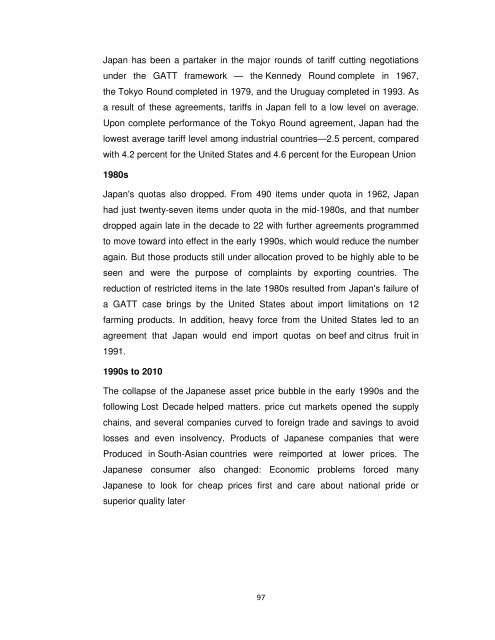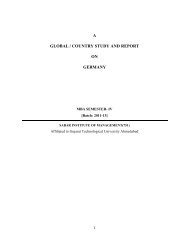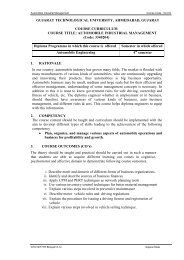708-Chaudhari Technical Institute, Gandhinagar - Gujarat ...
708-Chaudhari Technical Institute, Gandhinagar - Gujarat ...
708-Chaudhari Technical Institute, Gandhinagar - Gujarat ...
Create successful ePaper yourself
Turn your PDF publications into a flip-book with our unique Google optimized e-Paper software.
Japan has been a partaker in the major rounds of tariff cutting negotiations<br />
under the GATT framework — the Kennedy Round complete in 1967,<br />
the Tokyo Round completed in 1979, and the Uruguay completed in 1993. As<br />
a result of these agreements, tariffs in Japan fell to a low level on average.<br />
Upon complete performance of the Tokyo Round agreement, Japan had the<br />
lowest average tariff level among industrial countries—2.5 percent, compared<br />
with 4.2 percent for the United States and 4.6 percent for the European Union<br />
1980s<br />
Japan's quotas also dropped. From 490 items under quota in 1962, Japan<br />
had just twenty-seven items under quota in the mid-1980s, and that number<br />
dropped again late in the decade to 22 with further agreements programmed<br />
to move toward into effect in the early 1990s, which would reduce the number<br />
again. But those products still under allocation proved to be highly able to be<br />
seen and were the purpose of complaints by exporting countries. The<br />
reduction of restricted items in the late 1980s resulted from Japan's failure of<br />
a GATT case brings by the United States about import limitations on 12<br />
farming products. In addition, heavy force from the United States led to an<br />
agreement that Japan would end import quotas on beef and citrus fruit in<br />
1991.<br />
1990s to 2010<br />
The collapse of the Japanese asset price bubble in the early 1990s and the<br />
following Lost Decade helped matters. price cut markets opened the supply<br />
chains, and several companies curved to foreign trade and savings to avoid<br />
losses and even insolvency. Products of Japanese companies that were<br />
Produced in South-Asian countries were reimported at lower prices. The<br />
Japanese consumer also changed: Economic problems forced many<br />
Japanese to look for cheap prices first and care about national pride or<br />
superior quality later<br />
97
















